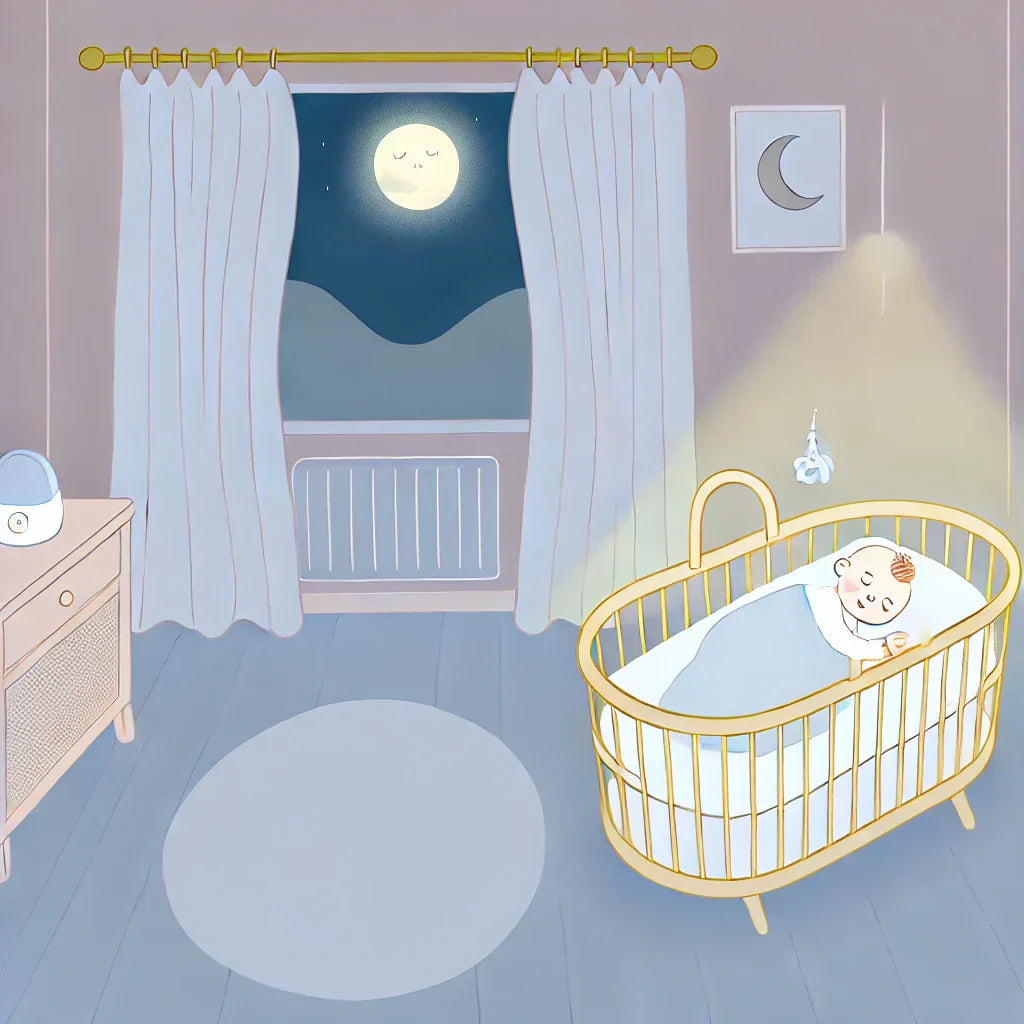1. Choose the Right Bedding
Why It Matters:
The bedding you select plays a crucial role in your baby’s sleep quality. According to a 2023 report by the National Childbirth Trust (NCT), over 80% of parents found that breathable, organic bedding improved their baby’s sleep. When choosing bedding, avoid heavy blankets and pillows that could pose a suffocation risk. Instead, opt for:
- Lightweight, breathable fabrics: Organic cotton or bamboo are ideal as they regulate temperature and are gentle on sensitive skin.
- Fitted sheets: Make sure they are the right size for the mattress to prevent bunching or slipping, which can be dangerous.
Additional Tips:
- Avoid using quilts or duvets for babies under 12 months old.
- Wash bedding regularly using a non-bio detergent to prevent allergies and skin irritation.
2. Maintain the Perfect Room Temperature
Ideal Temperature Range:
The Lullaby Trust recommends keeping your baby’s room between 16°C and 20°C (60-68°F) to provide a comfortable sleeping environment. This range reduces the risk of Sudden Infant Death Syndrome (SIDS) and ensures your baby doesn’t overheat or get too cold.
How to Monitor Temperature:
- Use a room thermometer: Many baby monitors now come with built-in thermometers, making it easy to keep an eye on the temperature.
- Dress your baby appropriately: In warmer months, a lightweight sleepsuit or vest will suffice, while in colder weather, add a sleep bag or extra layers.
Pro Tip:
Avoid placing the cot directly next to a radiator or window, as these spots can be prone to temperature fluctuations.
3. Position Your Baby Safely in Their Cot
The “Back to Sleep” Campaign:
Since the introduction of the "Back to Sleep" campaign in 1991, the number of SIDS cases has dropped by 85% in the UK. Always place your baby on their back for every sleep until they are 1 year old, as this position reduces the risk of SIDS.
Additional Cot Safety Guidelines:
- Keep the cot clear: Avoid placing toys, loose bedding, or cot bumpers inside, as they can pose a suffocation hazard.
- Use a firm mattress: Ensure the mattress fits snugly in the cot without any gaps. Soft surfaces increase the risk of suffocation and overheating.
Did You Know?
A study from 2022 revealed that 92% of parents who followed these guidelines reported that their baby slept more soundly.
4. Minimise Noise and Light Disruptions
Why a Calm Environment is Key:
Newborns are particularly sensitive to their surroundings, and sudden noises or bright lights can disrupt their sleep. Creating a calm, quiet environment helps your baby develop a healthy sleep routine.
Tips for Managing Light and Noise:
- Use blackout curtains: These are particularly useful for daytime naps and help regulate your baby's circadian rhythm.
- Introduce white noise: A white noise machine can mask household sounds, creating a consistent sleep environment. According to a 2020 survey, babies exposed to white noise were 45% more likely to fall asleep within five minutes.
Pro Tip:
Keep the lighting dim during night feeds and changes to avoid overstimulation, helping your baby return to sleep more easily.
5. Create a Calming Bedtime Routine
The Importance of Routine:
Establishing a calming bedtime routine can significantly improve your baby's sleep quality. Research published in the Sleep Medicine Journal in 2021 found that babies with a consistent bedtime routine fell asleep 30% faster and woke up less frequently during the night.
Steps to Establish a Routine:
- Bath time: A warm bath can help relax your baby and signal that it's time for sleep.
- Gentle massage: A light massage with baby lotion or oil can be incredibly soothing.
- Storytime or lullabies: Reading a short story or singing a lullaby helps your baby wind down.
Quick Tip:
Avoid using screens or electronic devices during bedtime, as blue light can interfere with melatonin production, making it harder for your baby to fall asleep.
Conclusion
Creating a safe and cosy sleep environment for your baby involves careful consideration of bedding, temperature, positioning, light, noise, and establishing a calming routine. By following these five tips, you can ensure your baby gets the restful sleep they need, while you gain peace of mind knowing they are safe and comfortable.

